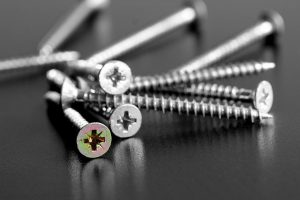
When shopping for screws, you’ll need to choose the right type. There are self-tapping screws as well as traditional screws. While they are both used for similar applications — specifically fastening — they aren’t the same. By understanding the difference between self-tapping and traditional screws, you’ll be able to choose the right type.
What Are Self-Tapping Screws?
Self-tapping screws are characterized by their ability to produce their own hole. All screws require a hole. To install a screw, you’ll have to insert it into the hole of a workpiece or surface. Self-tapping screws produce their own during installation. When turning a self-tapping screw with a screwdriver, it will dig into the workpiece or surface while simultaneously producing its own hole.
They are known as “self-tapping screws” because they “tap” into the workpiece or surface with which they are used. In other words, self-tapping screws create their own internal threading. They either dislodge or remove material from inside the workpiece or surface, thereby creating a threaded hole. There are thread-cutting self-tapping screws, and there are thread-forming self-tapping screws. Regardless, they all capable of producing their own hole during installation.
What Are Traditional Screws?
Traditional screws, on the other hand, aren’t able to produce their own hole. Rather, they typically require the use of a pilot hole. A pilot hole is simply a threaded hole. Pilot holes are typically created using a drill bit. Before installing a traditional screw, you can drill a pilot hole into the workpiece or surface. After drilling the pilot hole, you can use a screwdriver to install the traditional screw into it.
Without a pilot hole, traditional screws may cause damage to the workpiece or surface in which they are installed. For wooden workpieces and surfaces, traditional screws may cause splintering. As you drive the traditional screw into a wooden workpiece or surface, it may crack or splinter. Traditional screws can also break without a pilot hole. They aren’t designed to produce their own threaded hole. As a result, traditional screws are exposed to more stress, which can cause them to break at the tip or shank.
In Conclusion
Self-tapping and traditional screws have a similar design consisting of a head, shank and tip. Only the former, however, are designed to produce their own hole. Traditional screws typically require the use of a pilot hole, which is how they are distinguished from self-tapping screws.
